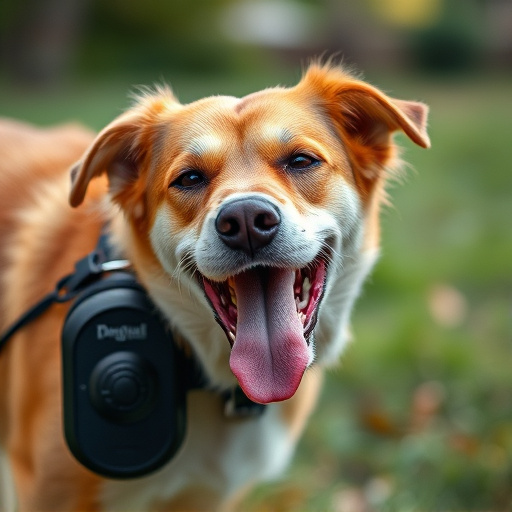Sound wave technology offers a humane and effective solution for problematic dog barking through adjustable bark control intensity settings. To train pets, owners should first identify triggers, start with low sensitivity, test discreetly, observe reactions, and fine-tune settings based on pet behavior – ensuring a collaborative approach that prioritizes safety and positive learning without causing harm.
Unleash a new way to manage your pet’s behavior with sound wave technology. This innovative approach offers a humane and effective solution for issues like excessive barking. In this comprehensive guide, we’ll explore how sound waves can be harnessed for positive reinforcement, understanding the science behind it all. Learn about customizing bark control intensity settings for precise results without causing harm. Discover training tips to ensure safety and effectiveness, empowering you to train your pet with modern, non-violent methods.
- Understanding Sound Wave Technology for Pet Behavior Modification
- Customizing Bark Control Intensity Settings: A Step-by-Step Guide
- Training Your Pet and Ensuring Safety with Sound Wave Devices
Understanding Sound Wave Technology for Pet Behavior Modification
Sound wave technology has emerged as a innovative and effective method for pet behavior control, particularly in addressing problematic barking in dogs. This non-invasive approach leverages the power of sound to modify an animal’s behavior without causing harm or distress. At its core, sound wave devices emit specific frequencies that can be tailored to target unwanted behaviors like excessive barking.
One of the key advantages is the ability to customize bark control intensity settings. Users can adjust the volume and tone of the sound waves to suit their pet’s unique needs, ensuring minimal discomfort while still effectively deterring unwanted vocalizations. This level of customization allows for a more nuanced approach to training and behavior modification, making it a preferred method for responsible pet owners looking for humane solutions to manage their pets’ behavior.
Customizing Bark Control Intensity Settings: A Step-by-Step Guide
Sound wave pet behavior control, particularly for barking dogs, has evolved to offer adjustable intensity settings tailored to different pets’ needs. Customizing these settings is crucial for effective and humane training. Here’s a step-by-step guide on how to do just that:
1. Identify the Trigger: Begin by understanding what specifically triggers your pet’s barking. Is it mailmen, other dogs, or simply boredom? Knowing this will help in setting appropriate sensitivity levels.
2. Adjust Sensitivity Levels: Most sound wave devices allow for multiple intensity levels, usually ranging from low to high. Start with a low setting and gradually increase it until the device activates just before your pet begins barking excessively. This ensures the sound is unpleasant but not harmful or stressful.
3. Test and Observe: After setting the desired level, test it discreetly to ensure it works as intended without causing any distress to your pet or neighbors. Observe your pet’s reaction over time to make sure they are learning the desired behavior.
4. Fine-Tuning: If adjustments are needed, fine-tune the settings based on your observations. It might take a few tries to get it just right, but patience and consistency will pay off in the long run.
Training Your Pet and Ensuring Safety with Sound Wave Devices
Training Your Pet: A Collaborative Approach
When it comes to sound wave pet behavior control, especially for barking dogs, the key lies in collaboration—between you and your pet. These devices are designed to be effective yet humane, and their success depends on proper training. Start by understanding your pet’s triggers; why do they bark excessively? Is it a response to strangers, other animals, or specific sounds? Once identified, work on desensitizing them through gradual exposure to these stimuli in a controlled environment. This process allows your pet to associate the sound with positive experiences, reducing their reaction over time.
Ensure Safety and Customized Control: Always prioritize your pet’s safety when using sound wave devices. These tools should be employed as a last resort and under professional or veterinarian guidance if necessary. Regularly review and adjust the intensity settings to match your pet’s needs. Many modern devices offer customizable bark control intensity levels, allowing you to fine-tune the response to various barking scenarios. Remember, effectiveness comes from understanding and addressing the root cause of the behavior, not just suppressing it.
Sound wave technology offers a humane and effective solution for managing pet behavior, especially excessive barking. By understanding how this technology works and customizing bark control intensity settings, pet owners can train their pets while ensuring safety. Following the step-by-step guide provided, you can effectively manage your pet’s behavior, fostering a quieter and more harmonious environment for both your pet and your community.
